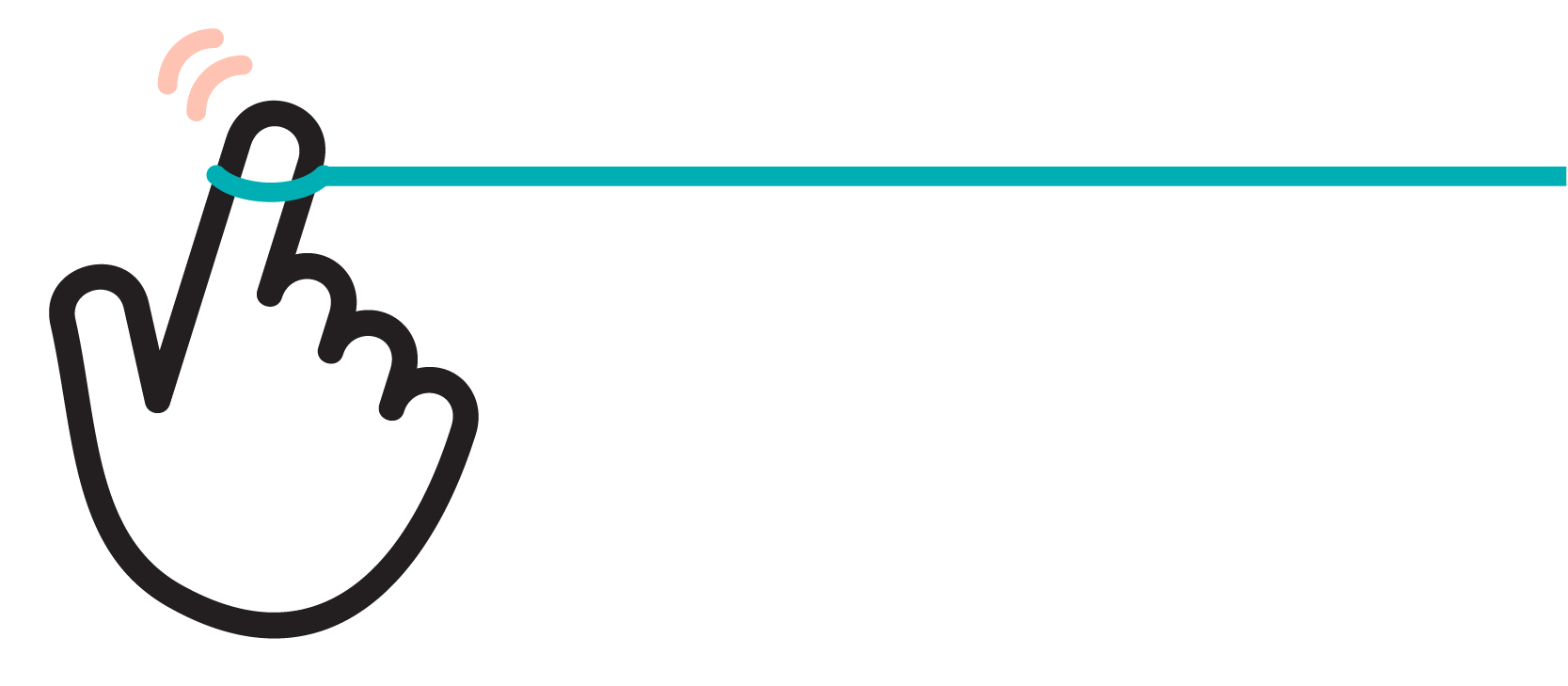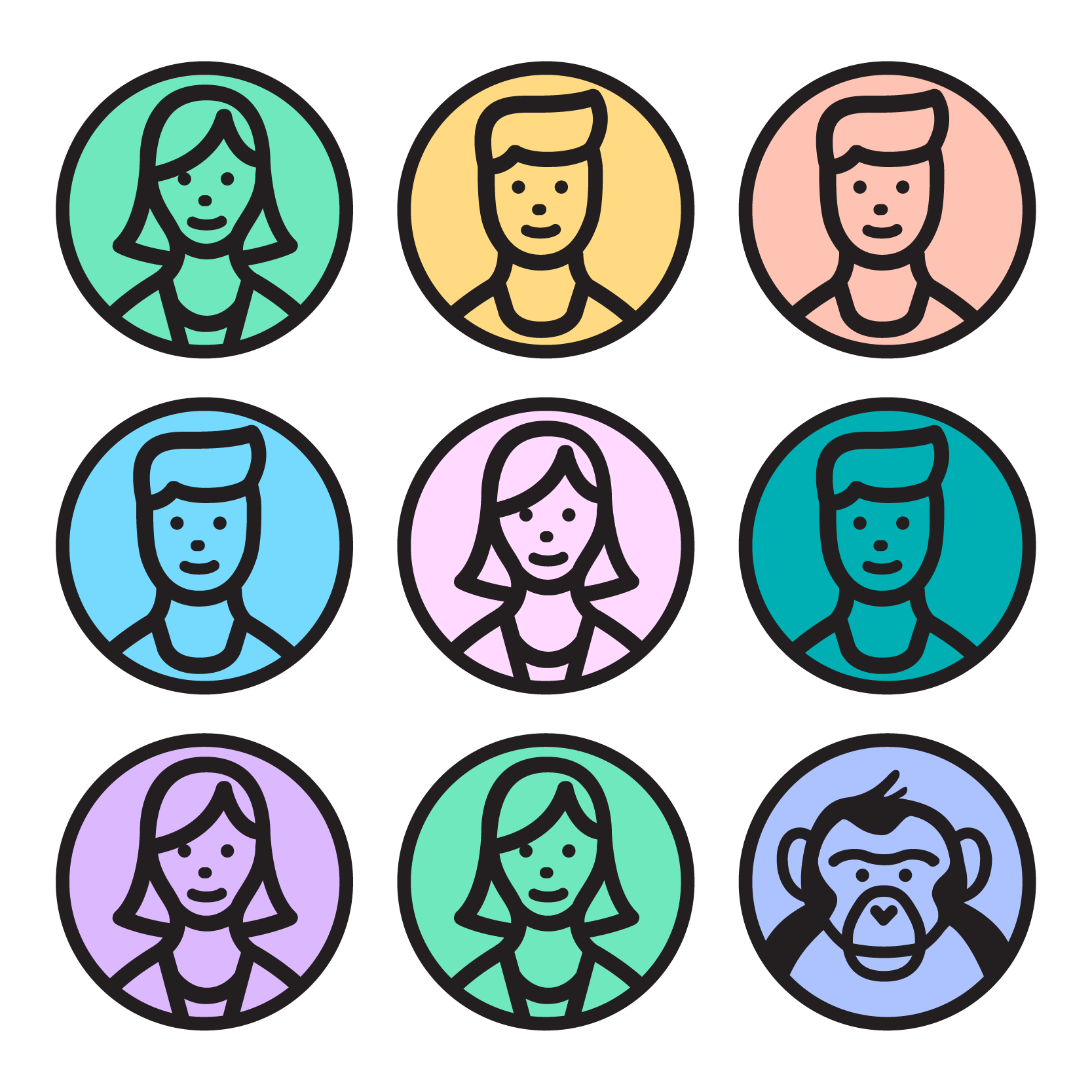
User experience is a broad term that basically just refers to how we encounter our environment and what effect it has on us. And when that environment is a website or an interactive visualization, that encounter can be purposefully designed so that a person is encouraged to feel a certain way, understand a particular idea, or take an intended action. Oh, the power we wield!
The fields of behavioral economics and social psychology are about understanding why we make the decisions we do. These findings can often be directly applied to designing experiences on a screen.
The following are a few such rules that I find particularly useful for UX designers. Note that I’m arranging my selected findings in a list. Why? Because a research paper on the subreddit Change My View points out that among the most effective strategies for convincing a reader, is using bullet points to organize your argument.
1. State It Clearly
To persuade with the written word, maximize the contrast between characters and their background. If you use color, you’re more likely to be believed if your text is set in a bright color than in middling shades of pink, yellow, or pale blue. Presenting familiar ideas in pretentious language is taken as a sign of low credibility and trustworthiness. All this suggests that if you want to say something, state it clearly—in language and design.
2. The Hot/Cold Empathy Gap
We tend to underestimate the power of the hot/cold empathy gap. That is, human experience is “state dependent.” If we feel hungry, tired, uncomfortable, distracted, confident, or excited, it will influence our decision making.
Relatedly, how information is framed can influence how we react to it. For example, people are more likely to donate, embrace an idea, or take an action when they’re in a good mood and their surroundings are inviting. We usually prefer familiar routes, easy-to-navigate paths, and positive vibes.
3. Priming
According to Daniel Kahneman in his book Thinking, Fast and Slow, people who are challenged by a demanding cognitive task are also more likely to make selfish choices, use sexist language, and make superficial judgments in social situations.
Kahneman also talks about how our actions and emotions can be primed by events which we’re not even aware. For example, money primes individualism. That is, a reluctance to be involved with others, to depend on others, or to accept demands from others.
4. Screens Bring Out Our Emotions
We tend to overvalue things on a screen, especially on a phone, probably because our attention is fleeting, not fully focused on these devices. We’re more likely to add a topping to a pizza if we order it online, and if we read a book on a screen, we’re less likely to remember its content.
This research comes from Shlomo Benartzi’s book, The Smarter Screen: Surprising Ways To Influence and Improve Online Behavior. In it, he talks about how people are more willing to admit unique preferences or embarrassing secrets on a screen, suggesting that people are particularly forthcoming on smaller devices.
Benartzi explains:
“Simply showing people their energy consumption causes them to significantly reduce it, periodically sending a text to parents updating them on a child’s performance greatly improves how they’ll perform in the future, one study showed that when people were given an app that displayed a quick snapshot of their own financial lives, they ended up reducing their spending by 16% within three months.”

5. We Focus on the Center
Benartzi also describes where people tend to look on a screen. Hint: it’s not in the corners.
Our eyes always go to the center. So much so that when people were shown choices of different snacks arranged in a grid, they would often choose ones they liked less, if they were placed in the center, even when their favorite snacks were still on the screen!
Moreover, because our field of vision evolved to encompass a wide plane, information that is framed horizontally tends to have higher saliency and staying power. We’re more likely to notice it in that context as opposed to a vertical sidebar.
6. Disinhibition Effect
Disinhibition effect is how social norms break down in electronic communications that would otherwise be present in face-to-face communication. Combine that with a heightened emotional response to things we see on screens and you can understand why online memes are so contagious, why viral videos spread so fast, and why comment sections can get so ugly—because online, there are no barriers to acting on impulse, even though you know it’s public.
People think extremely fast on screens, leading us to become more reliant on our instinctive responses and initial impressions. It takes just 50 milliseconds—literally the blink of an eye—to form an opinion of a website. That means our subconscious has begun to decide how reputable this nonprofit is, how believable those numbers are, how good this restaurant is, all before we’ve consciously absorbed any details.
7. Intensity Matching and Scope Insensitivity
Intensity matching is a demand that often leads to scope insensitivity. This just means that when people are presented with a problem with a given monetary cost, like an environmental disaster, and asked how much they’d be willing to pay to alleviate the damage, their answers do not scale with the actual cost of the problem. But when the cost is controlled across sample groups, and a monetary suggestion is attached to what they might donate, things change drastically. So when one groups is asked, “Would you be willing to donate $5?” while another group is asked, “Would you be willing to donate $400?”, the average contribution for the second group is significantly higher.

8. Reward Users
In his book titled Hooked, behavioral designer and author Nir Eyal describes how triggers can be attached to our daily routines and emotions, driving our interaction on a website.
Inviting friends, stating preferences, building a profile and virtual assets, and learning to use new features are all commitments that improve a given service for people.
The goal is to cultivate a familiar and customized environment for the user while building expectations in their mind. You might offer small rewards (a funny GIF, a breathtaking photo, a mind-blowing fact, a sharable interactive) but offer them sporadically. Unexpected treats and positive feedback can help engage the user and prompt them to return. Eventually, they may internalize these prompts and need no external motivation for coming back.
9. But Don’t Bother Them
Remember though, too much information leads to a scarcity of attention and that effect is amplified on screens. Numerous studies have found devices fragment our attention. Online, people are overstimulated, easily-distracted, hyper-connected, self-focused, and being pulled in many directions. But they’re also curious, happy to be surprised, and willing to discover.
Providing digital feedback gives you the advantage of cutting through the clutter and presenting only relevant information to the user. But feedback overload can lead us to tune out or overreact.
People don’t want to be bothered with too much feedback and we certainly don’t want every aspect of our life tracked but if feedback helps us curate our choices, it can be quite effective in driving action.
10. Progress Updates
One type of feedback is progress updates. When you let people know what is going on, they’re more patient and willing to go along with you. Just consider how Disney has perfected a much maligned necessity of amusement parks: waiting in line.
11. Choice Paralysis
Too much information will lead us to miss the most relevant details and make the wrong choice—or no choice at all. So first, strive to make every click useful, always moving the user closer to what they want. Help them get to their intended destination by giving them a digestible number of choices to make at any given stage in their journey. If there are too many options on a screen or it’s too easy to take a wrong turn, you’ve lost them.
12. Shared Social Responsibility
The Why Axis blog at Psychology Today, run by Uri Gneezy PH.D., describes a series of field experiments showing that when a large, multi-national corporation instituted a pay-what-you-wish pricing model for a product, with half of the revenue going to charity, the response was powerful.
The success of what they termed the “Shared Social Responsibility” model stemmed from a shift of the financial risk. Since the company was essentially risking losing money by giving a product away for free, they built up some goodwill with their customers.
The attention was taken off the company and minimized the demand on the audience. There was no pressure. You didn’t feel like you’re being solicited.
The moral: companies should not try to force corporate social responsibility on suspicious customers. Shared social responsibility between companies and customers allow people the freedom to opt in.
Many questions and points of contention in UX design are perfect for debate because we actually don’t have universal best practices. They’re dependent on lots of variables and may not have a right answer for all time. We should always be mindful that we tend to form our opinions and then rationalize them. We don’t often examine our preferences to find out if they’re based on empirical evidence rather than some story we’ve told ourselves. So in the end, the way to solve these problems is to consult the research, examine the tradeoffs, do as much user testing as you can, and trust your designers.